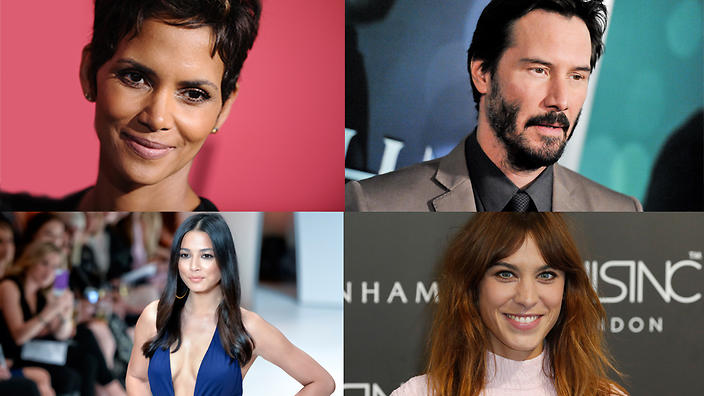Introduction
The study of celebrity, celebrities and celebrity culture is one of the rapidly developing sectors of humanities and social sciences in the last ten years. This essay will discuss some of the considerations that are necessary to put in place in the process of studying celebrity and its relevance in media theory. It will explore the required approaches that will prove to be most productive in defining and discussing celebrity culture for the purpose of media studies. It will address the need for setting theoretical, economic, social, political and technological considerations while exploring celebrity culture. It will further seek to propose ways to establish a stronger base for the study of the industrial production, as well as audience consumption, of celebrity.
With the current celebrity status in explosive growth, then attempts to conduct precise intellectual investments in the study of celebrity is, then timely and worthwhile especially in the media theory field. Currently there is no great deal of in-depth study of celebrity that has been done; also there is not much to boast about in academic writing and research on celebrity. The studies that have already been done tend to have been done on a limited pool of celebrities or from celebrity-related media flashpoints (Marshall 1997, 30) and the mode of analysis is primarily textual and discursive.
However there are few approaches that can be adopted. On several occasions there has been the formulation of theories or a history of celebrity (Rojek 2001, 48). With the prospect of more audience analyses shaping up in the near future, already the examination of the production of celebrity has been done and also several crucial studies of the consumers of celebrity. It is also evident that most analysis done is on individual celebrities by media as texts with selfish interest or decoys to larger cultural pretexts or political issue though most of the analysis the focus is directed on media representation. In celebrity research and formulation of hypothesis such factors have to be put into consideration. This will include considering that celebrity is not only a category of media text or a mere media discourse. Therefore a number of ways can be adopted to define and thus approach celebrity that would help account for other dimensions to the function and significance of celebrity (Couldry & Markham 2007, 420).
According to Marshal (1997, 67), the chief concern, however, is that what would be seen as the more structurally significant aspects of celebrity being sidelined by the preferences described. Celebrity analyses are not full of debates about how one may comprehend the celebrity product and there is only a slim academic literature which concentrates on the production, marketing, trade, or political economy of the structures which produce this commodity. Neither is celebrity studies composed of study into, as different from theorizing about, the societal role of the cultural configuration of celebrity. Of all these topics none is simple and approaching them involves calling upon a variety of disciplines, understanding and research methods; but they do give the impression that they will lead towards beneficial ways of developing fresh directions for celebrity studies in the near future.
Issues in celebrity studies
What is the way forward to carrying out celebrity studies in the future? For starters, there is a necessity to create a firm foundation for the quest into the industrial celebrity production. There is a considerable gap in celebrity studies, and there are at least two angles from which it can be tackled. First, would be to scrutinize the structural effect of celebrity upon creation in the globalizing media as well as entertainment industries. Despite the fact that any approach would need to be considerate of and responsive to local and nationalized production environments, the key objective for this initial set of examinations would be to comprehend the position played by global organizations.
These would incorporate the common media and entertainment interests, as well as the big publicity and promotional interests concerned in, for example, the advertising of celebrity properties as a part in the development of international branding (Couldry & Markham 2007, 410). This is a much larger number of questions than just those concerned with celebrity, however, and so there is another perspective of assessment that could tackle the celebrity industries from a more convenient vantage position. It could concern itself in the procedures and practices through which celebrity is fashioned and marketed in defined local or countrywide regions and markets sequentially to pick up the diverse levels at which the creation of celebrity articulates with varying models of media directive, creation, distribution and utilization, as well as the knowledge of the regimes of professional practice, that determined how these institutions carry out business.
If celebrity is a product, then there is the urge to know and more awareness about the industries which manufacture that commodity. To the point that it has involved itself in the political financial system of the media, cultural and media studies have fundamentally focused on the conventional points of attention, just as has its opponent paradigm. In recent years, American mass communications studies, cultural and media studies have, turned their interest to debates concerning regulation, possession and management, with the attendant challenges of attentiveness, cross-media interests and the increasing institutional and corporate associations connecting the media, industry and government (Rojek 2001, 56).
Looking where to BUY AN ESSAY?
Save your time and money! Use QualityCustomEssays.com professionals service to get an A+ paper
Place an order
&
get
15%off
for your first order
Much of this focus towards structural concerns seems to have been offset by the market and regulatory disturbances brought about by the development of digital media; cultural and media studies’ concentration in the latter has forced them consider more seriously the responsibility played by the former. however, and notwithstanding the sudden increase in interest in the growth of digital media, for most of the people the functioning description of ‘the media’ is still very much the same: the manufacturers and distributors of news by means of print and electronic platforms such as radio, television, newspapers, magazines, but at present with the addition of the diverse platforms of on-line media. It is time now to explore ways of updating this working description.
The minority would dispute the notion that the advertising and promotion industries have at present turned out to be structurally entrenched into the media financial system: they generate vast amounts of content; they create relationships which apportion exclusivity or otherwise control admission and rights; and in several other ways secure a connection of interdependency between media markets, advertising and promotions agencies, the media and entertainment manufacturing industries and the promotional or publicizing arms of other large businesses (Rojek 2001, 34). The televising of professional sport, for example, involves complex contracted dealings between sporting clubs, television networks, media privileges holders and distribution agencies, advertisers and big global trademarks such as Nike, Coke or Nokia.In such associations it would be interesting to know where the supremacy lies, and so a key area of investigation might be the business connections which organize celebrity as a means of advancing global trade marking across a wide variety of industries, not just media or entertainment.
A contemporary version of the media needs to incorporate such participants within its reach in order to be acquainted with the meaning of their interests and influence. It is common knowledge that most of what the publicity industries do is either unacknowledged or deliberately masked; once publicity is exposed to be commercially motivated it loses its competence to function as news. However, their influence has become so omnipresent across the media and entertainment industries that there is a need to discover ways of removing the disguise for them to directly examine how that influence is managed and operated. Political economy may well be the place to begin with, by tracing formal or informal business links or networks linking promotions and publicity agencies, their customers and the media organizations to which they provide admittance. As stated earlier, this involves beyond celebrity and opens up a much larger set of questions. However, beginning to ask those questions might place us in a position from which we are able to examine the agencies’ practices, roles and functions, for example, investigating the practices which over-determined the industrial production of news broadcast.
The even more difficult research question, however, and one that really must be at the heart of celebrity studies, is what to understand about celebrity culture as a societal or cultural structure. In the critical tradition of cultural and media studies, particularly in its Anglo-American formations, we have refused to make direct connections between the consumption of media products and their cultural or social effects. Indeed, years of inconclusive effects studies are probably among the motivations for the development of cultural studies approaches to understanding culture as a contingent and conjectural process in which the consumer is believed to have some degree of agency. There are plenty of examples of such concerns being expressed in communities outside the West.
Kraidy (2009, 18), for example, has discussed the response to reality TV formats in the Middle East, where programmes have been denied view, and a particular case a fatwa was put in force, as a solution to control what was officially regarded as dangerous to the social permanence of these cultures. Maybe this is just paranoid conduct from governments reluctant to take a prospect that these forms of popular traditions mean no harm to social stability and cultural practices. But what if it is not? What if there is advantage in the design, and proof to suggest, that popular entertainments may have the supremacy to ‘change the culture’ by ignoring the leaders and communicating directly to the viewers? No matter how mediated that power might be, it appears that there is a need to be all set to reflect about such a possibility. Currently, in media and cultural studies, the sector is inadequately equipped.
What is the way to go about understanding the cultural function of celebrity within modern-day Western fashionable culture? It is common knowledge that it is implicated in the construction of fan cultures, in young people’s expectations of their possible futures and in many of the dominant discourses about sexual attractiveness and sexual desire. What else does it do, though? Is it possible to attribute an independent influence to celebrity as a set of representations or discourses about the fashioning of the self, or alternatively to map its relationship to broader shifts in the culture? To take a specific example, is it possible that the promotion of certain kinds of spectacular behavior in order to advertise a reality television program, for example, Big Brother, may have an effect on what young people regard as desirable or acceptable behavior in their everyday lives; or would such advertising only work if it simply reflected shifts towards such behavior that are already embedded in the culture? Such questions are quite difficult even to approach without appearing to fall into one of a variety of disreputable camps: those who see celebrity as one of the more inflamed examples of tabloidization; those who assume that media produces effects simply through representation; or those who use their critique of celebrity culture as a means of delivering a moralistic or taste-based critique of the consumption choices of certain sections of the community (Kraidy 2009, 27).
It is important to try to negotiate the narrow path between these positions in order to continue to ask such questions. Indeed, they articulate to an issue of how the rise of celebrity culture interacts with (and indeed exemplifies) a significant change in the cultural function of the media. In Ordinary people and the media (Turner 2010), Turner argues that celebrity culture is one of the areas through which one can trace the prosecution of what he suggest is a new role for the media: as the generator or author of social identity/ies. Rather than merely representing or mediating identities originating in other sectors of the social or the political as it once might have done, the argument goes, the media now seems able to promote its own constructions of identity for example, as a by-product of the recruitment of participants for reality TV or through other forms of industrially based celebrity. The provocations for his argument include the visibility of these versions of identity in social surveys of young people’s attitudes mentioned earlier, where young people voice their ambition to be famous as if it was a career objective of itself, and without much considering the nature of the career they might undertake which would produce that fame.
Also implicated is the observation that many of the contestants in a format such as Idol express their conviction that their uniqueness or ‘star quality’ is likely to be recognized through the performance process. This conviction seems independent of any confidence in their particular skills or talent: the recognition is regarded as a personal validation and, paradoxically, the less talent is involved the more categorical and empowering the validation. These two observations are used to raise the possibility that notions of media visibility, of recognition through the establishment of the celebrity-commodity, or of access to ‘media centre’ (Couldry 2000, 207), are becoming embedded in the culture’s repertoire of understandings of what it is to be a subject, what constitutes identity and what kinds of performance of identity might be desirable.
If there is anything to this, then it would signify an imperative cultural responsibility for celebrity customs, and thus an essential logical utility for celebrity research. It is not quite lucid how such issues could be adequately addressed, the types of research projects, the types of methodological strategies, even the type of queries, need to be examined in order to be equipped with a adequately contingent and nuanced report of the cultural purpose of celebrity that would aid comprehend its input in the cultural creation of identities.
Turner (2010, 45) raises another additional problem that unintended cultural effects, which may well be quite profound, are largely generated in pursuit of commercial rather than social or political outcomes, although they may well produce all three. If they do then go on to influence or even perhaps change the way we think about identity, there is little reason to expect that such a change has our interests or those of the society as among its motivations.
Conclusion
It is important that celebrity studies act more than merely participate as just one additional contributor to the discursive regime encompassing celebrity. While the textual difficulty and dynamism of celebrity civilization is amongst its chief attractions, celebrity studies must be conscious of the threat of reacting only to that, of using its investigative strategies to create something that is, eventually, largely evocative. There is now a sufficient theoretical and historical basis for media theory scholars to embark on more ambitious programs of research that involve more direct enquiries of audiences, producers, publicists and so on in order to develop a body of structural information, as well as textual materials, that might help us to better understand the operation and function of celebrity.
Crucially, the field of celebrity studies will have a much stronger base if it concerns itself with understanding the industrial production, as well as the audience consumption, of celebrity. This knowledge can only be gained by means of media representations as the raw data for delineating the numerous ways through which celebrity has permeated the postulations and discourses which notify the building of cultural identity. Thereafter the development of more and other types of, material for this task by approaching celebrity through a more diverse range of, methodological strategies, several of them borrowed from more empirical modes of enquiry. Multi-factorial, conjectural and multi-disciplinary approaches are required to guarantee that there is full exploration of the fruitfulness of celebrity as a site for investigating the function of the media and the cultural creation of identities.


